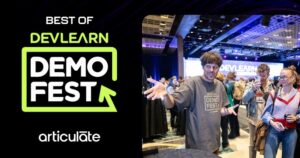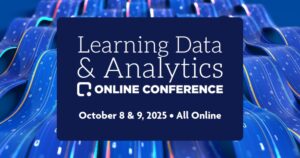Learning and talent management havetraditionally worked independently of each other, but towards the same goal – increasedproductivity. As technology continues to evolve, the two functions are intertwining,creating more streamlined and effective learning experiences that impactemployee performance. Learning is using talent management, performancemanagement in particular, to drive development plans, while talent managementis using learning to cultivate future leaders. Together, they are changingdevelopment strategies and the way in which you manage and allocate learningcontent, ultimately improving performance.
Efficient learning
As the functionality of learning becameintegrated within HR, there was a strategic transformation in the way youprescribe learning, proving learning is inseparable from performancemanagement. Learning Content Management Systems (LCMS), guided by performanceresults, now develop personalized learning experiences. We need to customize contentthat’s centrally stored to meet the needs of various employees without losing thecore learning lessons. This strategic deployment of content is impacting theoutcome of learning initiatives and creating efficiencies for talent managers. Thedelivery of personalized learning ensures relevancy, eliminates redundancy, andis unattainable without the fusion of traditionally siloed learning and talentmanagement. With this, employees get the most out of training – and employersget the most out of them.
Efficient learning processes utilizeperformance metrics for the development and growth of employees. A personalizedlesson plan becomes a byproduct of efficient learning through identification ofcurrent competencies and performance. Learner performance data tell talentmanagers where employees need to improve, and identify areas of success. Managersare better equipped to hold employees accountable for the competencies alignedto individual development activities and to capture performance metrics gleanedfrom learning sessions. In turn, talent managers possess the ability to grow theworkforce based on strengths and weaknesses within the employee base.
Utilizing performance metrics and appraisals
The time when learning was pushed outin bulk has ended, since the need for the actual impact and true ROI oflearning has emerged as a top priority – and a learning manager alone cannotaccomplish this. Just as talent management has updated the appraisal processthrough 360-degree and multi-appraiser reviews, there must be a morecomprehensive and insightful process in order to understand if we are applying learningsituationally.
While we leverage performance data toidentify leaders from within, development plans, along with assessments, goals,and objectives, simultaneously guide training for employees poised forleadership. A critical challenge in the workplace is ensuring that we aredeveloping leaders to fill potentially vacant critical positions in the future.Talent technology can pave the way for this identification, while learningtechnology trains and develops potential leaders.
Just as technology continues to evolveand unify learning technology and talent management functions, the role of thelearning technology manager must mirror the modern needs of today’s enterprises.Many have predicted the impending death of the Chief Learning Officer role and,with recent M&A (mergers and acquisitions) activity in the HCM (HumanCapital Management) space it seems possible. Nonetheless,the function and goals of learning prove critical as they resurface as a corefunction within HR.
A unified platform is the key
By operating on a unified platform,learning technology managers and talent management can drive efficiencies fromshared processes, and keep pace with emerging human capital initiatives:
- Managing learning content – Learning and talent managers need a central repository housing the same data and materials. This ensures that we can repackage and repurpose learning content for the individual, but retain core messaging and information to provide a consistent learner experience. The automation of talent management assists both parties in getting the right training to the right student at the right time.
- Identifying and cultivating individuals – On a single platform, captured performance data allow learning managers to create and deliver personalized learning. Through relevancy and elimination of redundancy across training sessions, employees get the most out of training – and employers get the most out of them.
- Cross-referencing development plans with performance records – By fueling learning initiatives with performance metrics and records, we increase employee accountability to their development goals. Talent managers can utilize this blended solution to identify and develop leaders from within.






